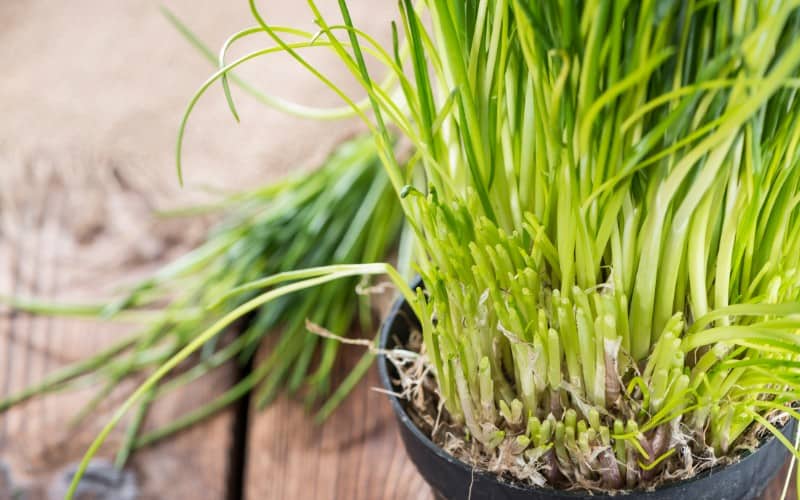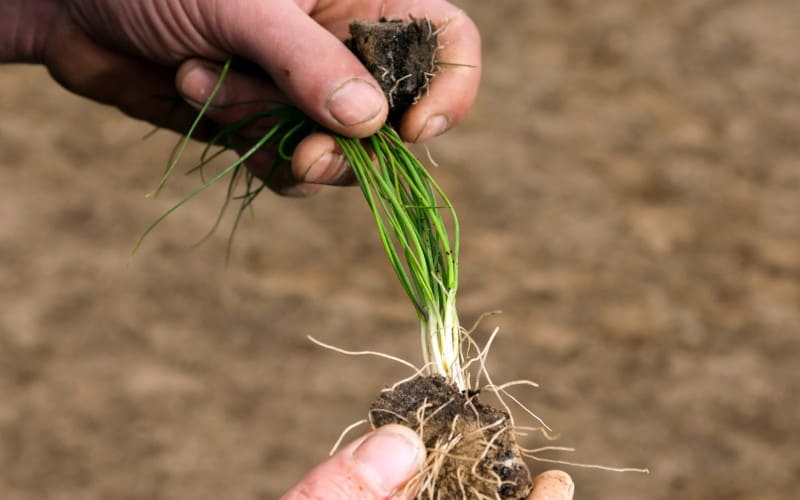When it comes to harvesting chives, you need to be extra careful as to maintain constant growth each year, or all through the year as the case may be.
Chives are low maintenance, easy to grow perennial herb with onion and garlic flavor. They can serve as an important ingredient in salads or savory dishes.
Despite being easy to cultivate, they are delicate and can easily die when harvested wrongly.
So in this article, we will be discussing how to harvest chives without killing the plant, so that you get to enjoy better yield year after year.
Table of Contents
Do Chives Come Back Every Year?
Chives are perennials that grow in clumps, having small bulbs at the bases of each leaf set. They have rhizomatous roots that spread horizontally beneath the soil.
You may be able to cultivate and harvest chives all year round depending on the weather or zone. This is also the fact if they are grown in pots indoors.
Some gardeners have succeeded in cultivating this herb all through the year, and this is why.
Chives are referred to as cold-hardy herbs, which also include the family of, mint, oregano, parsley, sage, and thyme. They can survive mild winter if grown indoors or provided with some protection for outdoor cultivation.
Unfortunately, more often than not, chives die back in harsh winters while emerging in the spring.
When To Harvest Chives
So how do you know when chive plants are mature enough to be harvested?
In the first year, chives are mature to be harvested at most 30 days after transplanting or 60 days after cultivating from seed. You also want to watch out for the height. Anything above 6 inches is a great time for harvesting.
After the first year, you can begin picking your chive foliage at will all through the summer and in mild climates through the winter.
And of course, just like most flowering herbs, you get the best value from the leaves in taste, flavor, and quality just before it flowers, or before the flowers form seeds.
How To Harvest Chives Without Killing The Plant
Gardeners have different procedures for harvesting their chives. But a majority of them have indeed been doing it wrongly.
While it may seem to come back every year or give better yield, just a little knowledge in the right direction will make a huge positive difference in reducing wastage.
It is a common practice to cut from the tip of the chive plants for a quick recipe if you need a little quantity of chives. This is a wrong practice.
Chives are not to be cut from the top but the bottom of the plant.
Why is this so?
Cutting chives from the tip of the foliage kills the stalk from where you cut to the ground – this is a total waste and not either good for the plant.
Another wrong way is to uproot the whole stem off the ground. This is the surest way to kill the plant because if you cultivate it again, it is going to take a while for the root to get traction in the soil and start to germinate new leaves.
Now haven disapproved of most of the common practices, how then do we harvest chives rightly?
Here is what you need to do…
Use a kitchen scissor or garden pruning shears to cut from the base of the plant just at least one inch above the soil. It is that simple.
After a few days mostly around 30 days, the plant grows new foliage and ready for another round of harvest. You can be able to harvest up to 3 – 4 times during the year and be sure to get a better yield the next year and subsequently.
How to Prepare Chives For Winter
If you live in climates that experience harsh winter, you can take your plants inside if they are grown in pots. Place them just by the window to get a bit of sun and water the plant regularly. Your plant will keep producing through the winter.
If the chives are grown in the garden, then they will go dormant in response to the temperature and humidity. They will eventually poke their skinny heads back up in spring.
Mulching the soil is not compulsory, but it can be beneficial to the plant in some ways if you have the time to do it.
How to Store Chives After Harvest
Chives can be used when fresh or when dried. However, they lose more of their flavor when dried. Unfortunately, you may not be able to have fresh chives all through the year especially if you live in regions where the plants get dormant for the winter.
If you harvest more than you require for the recipe, you can preserve what is left by placing the ends in water and storing them in a refrigerator. This process can; however, preserve the leaves for a couple of days before it starts to get rot.
To store them for a long time probably a few weeks and months, they can be placed in a freezer.
Chop them and place them in freezer bags. Again, do not expect to retain the flavor that long. You will still lose some of the valuable flavor. Overall, it is always best to use them fresh.
Conclusion
Harvesting chives is not rocket science, it is one of the easiest among most perennial herbs.
Whether you are harvesting a large quantity or just want a few for a quick recipe, you should endeavor to cut to the ground, leaving at least 1 inch. This will make the plant replenish faster and live healthily.
The major reason for this is to reduce wastage.
If you will at any point need the flowers for garnish, we recommend that you still cut the flower stalks off at the soil line to prevent the plant from forming seeds.
All these due processes ensure that you keep reaping from the plant from one-time cultivation rather than going through the same process and waiting for 60 days to harvest.






